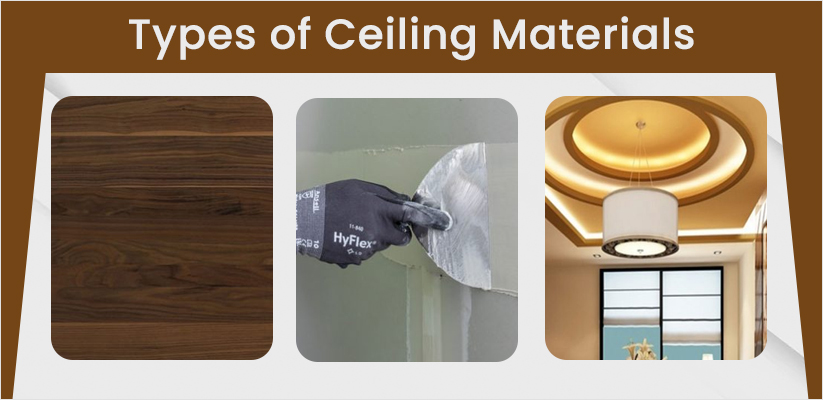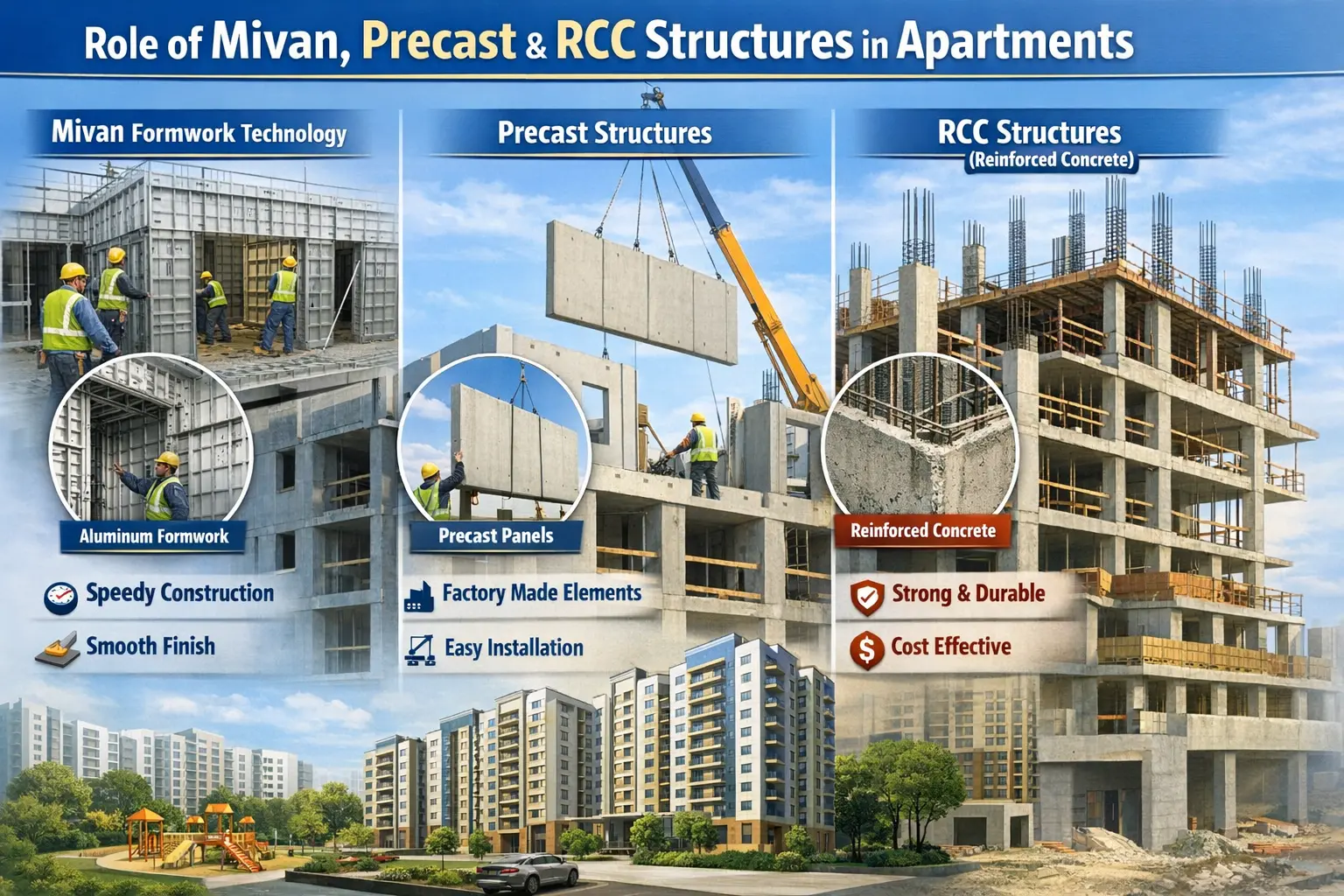Types of Flase Ceiling Material
False ceilings, also known as drop ceilings or suspended ceilings, are secondary ceilings that hang below the main structural ceiling. They offer various benefits such as aesthetic appeal, sound absorption, thermal insulation, and concealing electrical and plumbing systems. Here are some common types of false ceiling materials, along with their detailed characteristics:
Material: Gypsum plasterboard panels
Characteristics:
- Lightweight: Easy to handle and install.
- Smooth Finish: Provides a seamless and elegant look.
- Fire-Resistant: Offers good fire resistance properties.
- Sound Insulation: Excellent acoustic properties, reducing noise transmission.
- Moisture Resistance: Some variants are moisture resistant, suitable for areas with high humidity.
2. Plaster of Paris (POP) False Ceiling
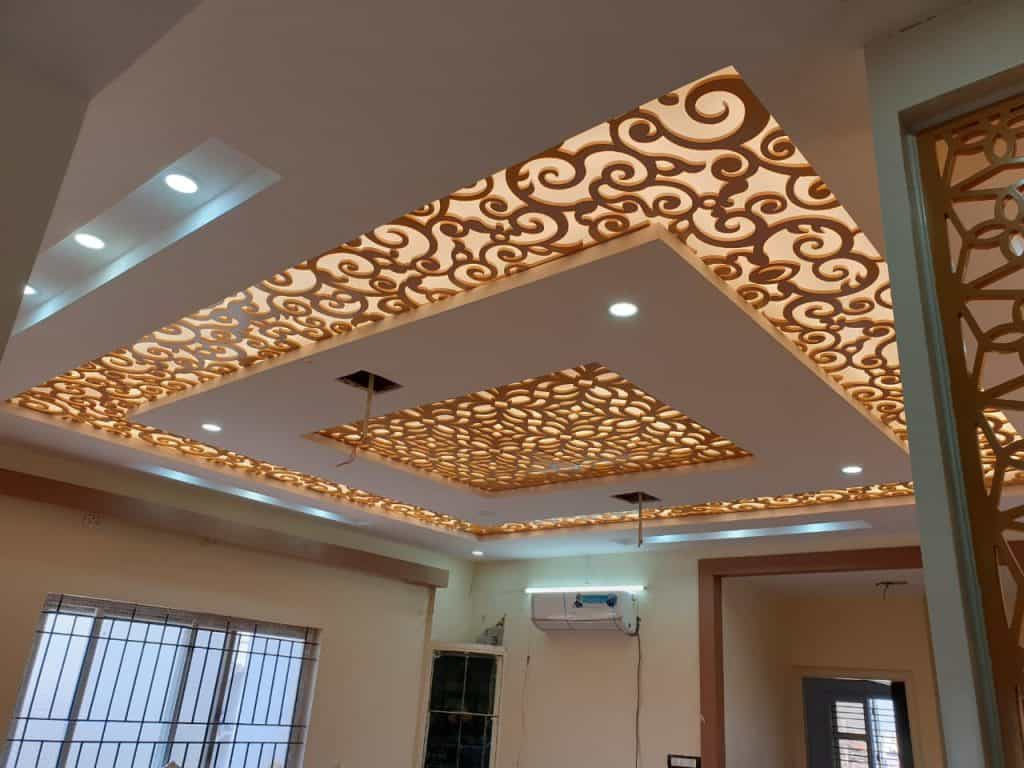
Material: POP sheets or mixture applied on a wire mesh framework
Characteristics:
- Aesthetic Appeal: Can be molded into various shapes and designs for decorative purposes.
- Smooth Finish: Offers a fine and smooth finish suitable for painting.
- Cost-Effective: Generally more affordable than other materials.
- Customizable: Easily customizable to create intricate patterns and designs.
3. Metal False Ceiling
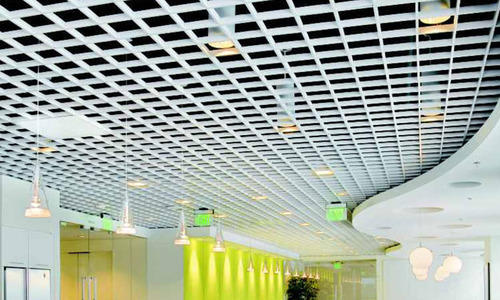
Material: Aluminum, steel, or tin panels
Characteristics:
- Durability: Highly durable and long-lasting.
- Variety: Available in various finishes such as matte, glossy, and textured.
- Fire-Resistant: Excellent fire resistance properties.
- Moisture Resistant: Suitable for areas exposed to moisture like kitchens and bathrooms.
- Easy Maintenance: Easy to clean and maintain.
4. Wooden False Ceiling

Material: Timber planks, plywood, or veneer
Characteristics:
- *Aesthetic Appeal: Offers a warm and natural look.
- *Insulation: Provides good thermal and acoustic insulation.
- *Customizable: Can be carved and designed in various styles.
- *Maintenance: Requires regular maintenance to prevent issues like termite infestation and warping.
| "BEST BUILDERS FlOOR APARMENT IN CHENNAI" |
5. PVC (Polyvinyl Chloride) False Ceiling
Material: PVC panels
Characteristics:
- Lightweight: Easy to install and handle.
- Waterproof: Completely resistant to moisture, making it ideal for bathrooms and kitchens.
- Durability: Resistant to termites and other pests.
- Variety: Available in various colors, patterns, and finishes.
- Low Maintenance: Requires minimal maintenance and easy to clean.
Also read: Did you Known About False Ceiling..
6. Glass False Ceiling

Material: Toughened glass panels
Characteristics:
- Modern Look: Provides a sleek and contemporary appearance.
- Light Diffusion: Allows natural light to pass through, enhancing lighting.
- Reflective Surface: Creates an illusion of more space.
- Customizable: Can be frosted, tinted, or colored for different effects.
- Maintenance: Requires regular cleaning to maintain transparency and shine.
7. Fabric or Cloth False Ceiling
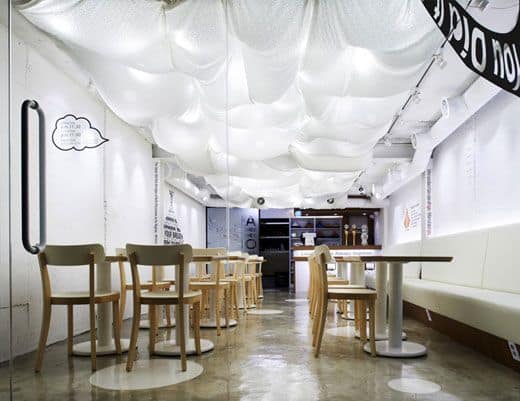
Material: Stretched fabric or cloth panels
Characteristics:
- Aesthetic Appeal: Offers a soft and elegant look.
- Acoustic Properties: Good sound absorption properties.
- Flexibility: Can be easily changed or replaced.
- Variety: Available in various colors, textures, and patterns.
- Maintenance: May require regular cleaning or replacement over time.
8. Mineral Fiber False Ceiling

Material: Mineral fiber panels
Characteristics:
- Sound Absorption: Excellent acoustic properties.
- Thermal Insulation: Provides good thermal insulation.
- Fire Resistance: High fire resistance rating.
- Variety: Available in different textures and finishes.
- Eco-Friendly: Often made from recycled materials.
9. Composite False Ceiling
Material: Combination of materials like aluminum with mineral wool or gypsum with metal
Characteristics:
- Hybrid Benefits: Combines the advantages of multiple materials.
- Customizable: Versatile in design and application.
- Durability: Offers enhanced strength and durability.
- Special Properties: Can include features like enhanced fire resistance, sound insulation, or moisture resistance depending on the materials used.
Each type of false ceiling material has its unique advantages and is suited to different applications based on the requirements of the space, aesthetic preferences, and budget.
Also read: Difference Between True Ceiling & False Ceiling
https://www.livehomes.in/blogs
